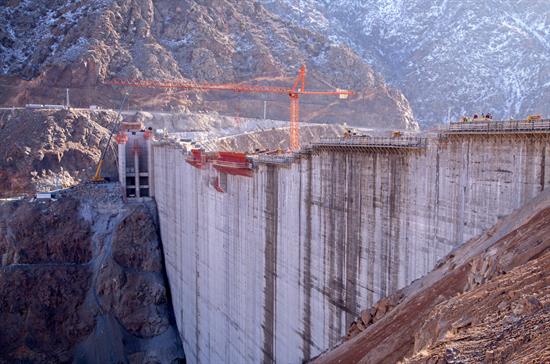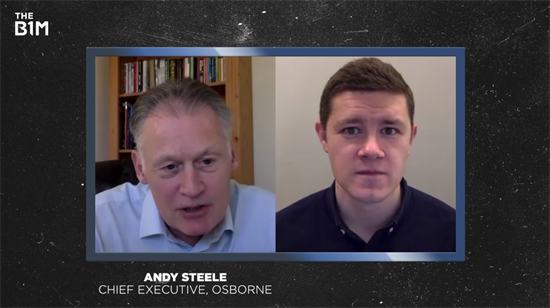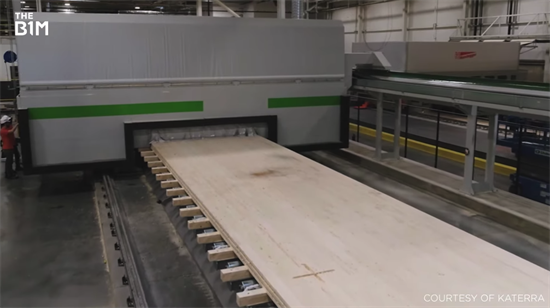The Plan to Change Construction
- Youtube Views 80,013 VIDEO VIEWS
What's in the UK Government's new "Construction Playbook" and how will it impact the industry?
Fred Mills spoke to Jesse Norman MP, Financial Secretary to HM Treasury, Osborne’s Chief Executive Andy Steele and Rachel Skinner, President of the ICE, to find out.
FROM the homes we wake up in, to the schools we take our children to, the hospitals we depend on and the infrastructure that connects, transports us and generates our power - the construction industry shapes our world.
But for all its impact, the sector has long-been beset with challenges - struggling to raise productivity, improve quality, operate more sustainably or fully protect its workers.
Now, the UK’s government has teamed-up with the industry to try and change construction.
But after so many Governments have attempted to hit the reset button before, and with several big industry reports already under our belt - is this time truly different, and will this plan actually work?

Above and Below: From our homes and schools, to cities and major infrastructure - the construction industry shapes our world.

We now need construction more than ever.
We have to build in a more sustainable way that doesn’t harm our planet, many nations are facing a housing crisis, changing social dynamics are impacting how we now use our cities and many governments see big building programmes as a way to bounce back from the pandemic.
It’s a context that has put construction’s challenges under the microscope.
The severe lack of people choosing to work in the sector, failure to embrace change and low productivity levels are now global problems.
Jesse Norman MP, the Financial Secretary to HM Treasury who also has infrastructure strategy as part of his remit, explained:
“Construction is a huge part of the economy, it’s a crucial part of the whole Government’s approach to rebuilding infrastructure and it plays a vital role in people’s everyday lives.”

Above: The B1M's Fred Mills interviews Jesse Norman MP, Financial Secretary to HM Treasury.
Rachel Skinner, President of the Institution of Civil Engineers (ICE), added:
“We decide that we’re going to build things and those things underpin the whole of our quality of life. They provide the way we get around every day, the digital connectivity we rely on, the buildings that we’re all inside - anything and everything in terms of how our everyday lives functions essentially starts from some form of construction.”

Above: Fred Mills interviews Osborne's Chief Executive Andy Steele.
As with many countries, in the UK the government is the largest construction client.
They spend the most on buildings and infrastructure and have the power to influence how the industry works through the type of projects they commission and how they manage them.
To try and improve the sector, the UK Government has listened to the industry to understand where the big challenges are and then worked with it to develop The Construction Playbook - a comprehensive near 90-page plan that sets how the Government will approach construction projects going forward.
At the Playbook’s core are three main priorities; improving workforce safety and wellbeing, addressing building safety - particularly in the wake of the UK’s Grenfell Tower disaster - and building back greener; helping to achieve a 68% cut in the UK’s overall greenhouse gas emissions by 2030 and a 100% cut by 2050.
There are then 14 mandated policies that any projects developed by the UK’s central government, will have to follow - triggering a trickle-down effect into Local Authorities, the private sector and the supply chain.
The ideas are not exactly radical or new and focus almost entirely on the front-end, emphasising getting things right in the pre-construction process. The hope is that, the changes they initiate, will go on to help address many of the biggest issues.
First, they’ll be a clear, central pipeline of work published by the Government, helping the industry to plan and prepare for projects way in advance.
Departments planning projects will have to assess the market early on, picking up on weaknesses or opportunities and seeing which emerging tech they could take advantage of.
The Government will also commit to longer-term projects in certain areas, giving the industry the certainty it needs to invest in new technologies.
Building on that longer-term approach, the Government’s construction projects will be harmonised to choose for a standardised set of components - improving value for money and reducing long term maintenance costs, while enabling construction to fully scale its emerging offsite manufacturing techniques.

Above: Offsite manufacturing is a key area of focus. Image courtesy of Katerra.
There’ll be another push to use information modelling and standardise data and early supply chain involvement will now be mandated.
In one of the biggest shifts, departments will now need to focus on the outcomes they are trying to achieve with a new building or built asset, rather than the short-term scope of their construction projects.
There are new rules on benchmarking to help with decision making, a requirement to consider the best delivery model and, from there, a renewed emphasis on effective contracting.
Moving into the procurement phase, where the government actually issues tenders for work, there’ll be a fairer and more balanced approach to risk management and new rules on payment and pricing - moves the government hopes will make it a more attractive party to work with.
Finally, the financial standing of critical suppliers will be assessed before contracts are awarded and plans for the worst case drawn up in advance - helping to prevent the chaos that’s caused when construction firms collapse.

Above: Fred Mills speaking to ICE President, Rachel Skinner.
While pretty much all of this may feel like common sense, it’s not the way that construction currently works - and, while things have been steadily getting better, our built world tends to get delivered through a laborious, expensive, inefficient and confrontational process.
Though the challenge is a global one, many UK governments have grappled with the task of changing this vast and fragmented industry - drawn by a desire to build a greener society, grow the economy and get better value for their taxpayers.
Just since 1994, a myriad of major reports, reset moments, new strategies and new governments have come and gone, each moving things forward a little, but ultimately failing to connect on a widespread scale.
Despite these interventions being welcomed and triggering some pioneers to emerge in some cutting-edge fields, much has remained the same.
With another of these moments now upon us, I wanted to ask the UK Government and the industry about this track-record and understand what - if anything - will be different this time around.
“I think this will be the most definitive report” explains Andy Steele, chief executive of Osborne. “All the other reports are asking the industry to solve its problems, but actually its buying behaviour that’s the most pivotal difference. If your buyers change how they’re buying, the industry responds to that. That’s the most exciting bit”

“It feels timely to have this available right now” explains Skinner, pointing to upcoming efforts to bounce back from the pandemic and the need to tackle the climate emergency. “It does feel like the Playbook has a pretty good run in terms of the potential to be successful.”
While many of us may be weary of past experiences and sceptical about how The Construction Playbook may actually change things, it’s existence and championing by the UK’s central government should of course be welcomed.
Now published and available for free download in the UK and the rest of the world, the document sets a vision to aim for and could have a knock-on effect in other countries interested in its theories, helping change our world for the better.
Video presented and narrated by Fred Mills. Our thanks to the UK Cabinet Office, HM Treasury, Osborne, the Institution of Civil Engineers (ICE), Jesse Norman MP, Andy Steele and Rachel Skinner.








